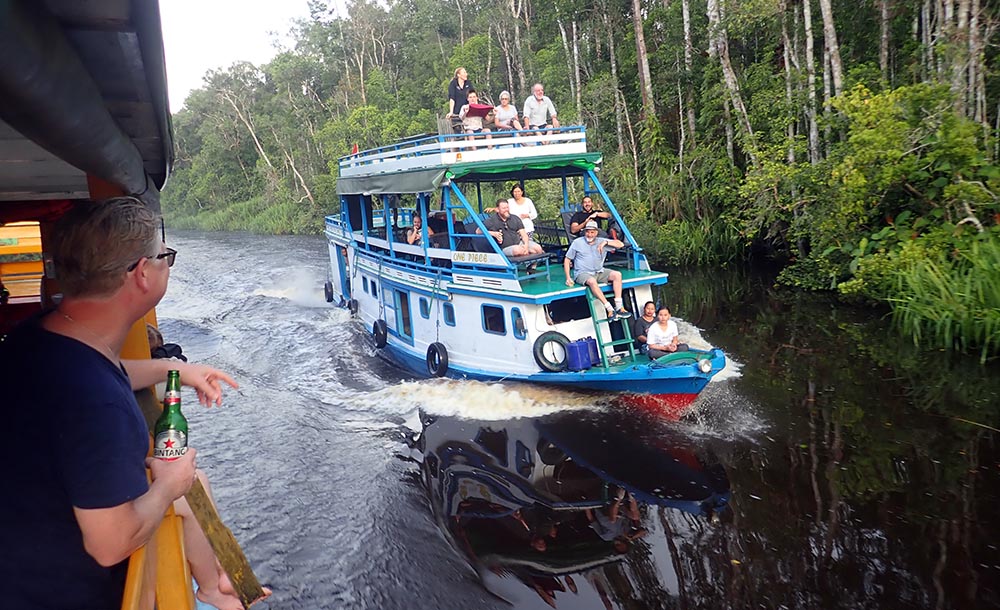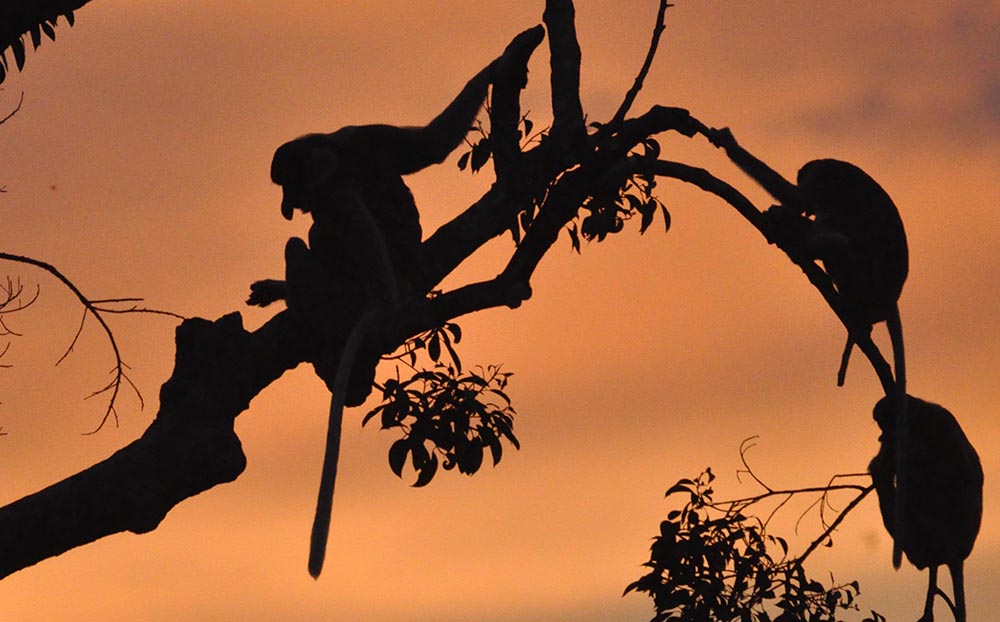ecosystem-guides.com
....exploring the planet's ecosystems
Tanjung Puting National Park
Kalimantan, Borneo, Indonesia
This national park is home to the famous Camp Leakey. To get there requires doing one of the greatest river journeys on the planet...
I have visited this area half a dozen times with two different expedition companies.
Tanjung Puting National Park is over 400,000 hectares in size. It is usually accessed by going up the Sekonyer River, which forms the northern border of the park. As you go upriver, the forest on the right is protected, and the land on the left is outside of the park.
The best and most common way to go up the river and into the national park is with local wooden boats called Klotocs. They have toilets, mattresses, chairs and tables, and a kitchen. They chug along fairly slowly, allowing time to look at the forest, birds and mammals.

Along the river there are flowers, butterflies, reptiles, birds, and lots of primates. The lower reaches of the river are dominated by the saltwater adapted Nypa Palms, and here you might be lucky enough to see a troop of Langurs...
Further up the river, one of the most common and distinctive animals are the Proboscis Monkeys.
Along the river in the late afternoon hundreds of Proboscis Monkey and Long-tailed Macaques perch in the treetops to get ready to sleep for the night. I think it is possible to see more monkeys here in a few hours than anywhere else on the planet...

Along the river, there is a stop where a walk through the forest leads to a feeding platform for orangutans.
Heading further up the river, there is the chance of seeing many types of birds. The most striking species including Broadbill and the Stork-billed Kingfisher.
Heading further up the river, there is the chance of seeing many types of birds. The most striking species including Broadbill and the Stork-billed Kingfisher.
Along the black water river it is possible to spot the local Tomistoma, a vey long-snouted crocodile sometimes known as the 'false gharial'. Despite the thin snout, they have been confirmed to have attacked and eaten humans in Borneo; a reason to stay out of the water here.
An hour further and the boats stop at the famous Camp Leakey research station, established by the Orangutan researcher Dr. Birute Galdikas. The walk into the station goes through the flooded peat swamp, rainforest, and heath. Along the way you can see several species of Pitcher Plants.
Occasionally, Bearded Pigs come into scavenge the food that falls off the platform. Gibbons make an appearance at the feeding platform, swinging down and stealing food (and the show) and brachiating off again...



